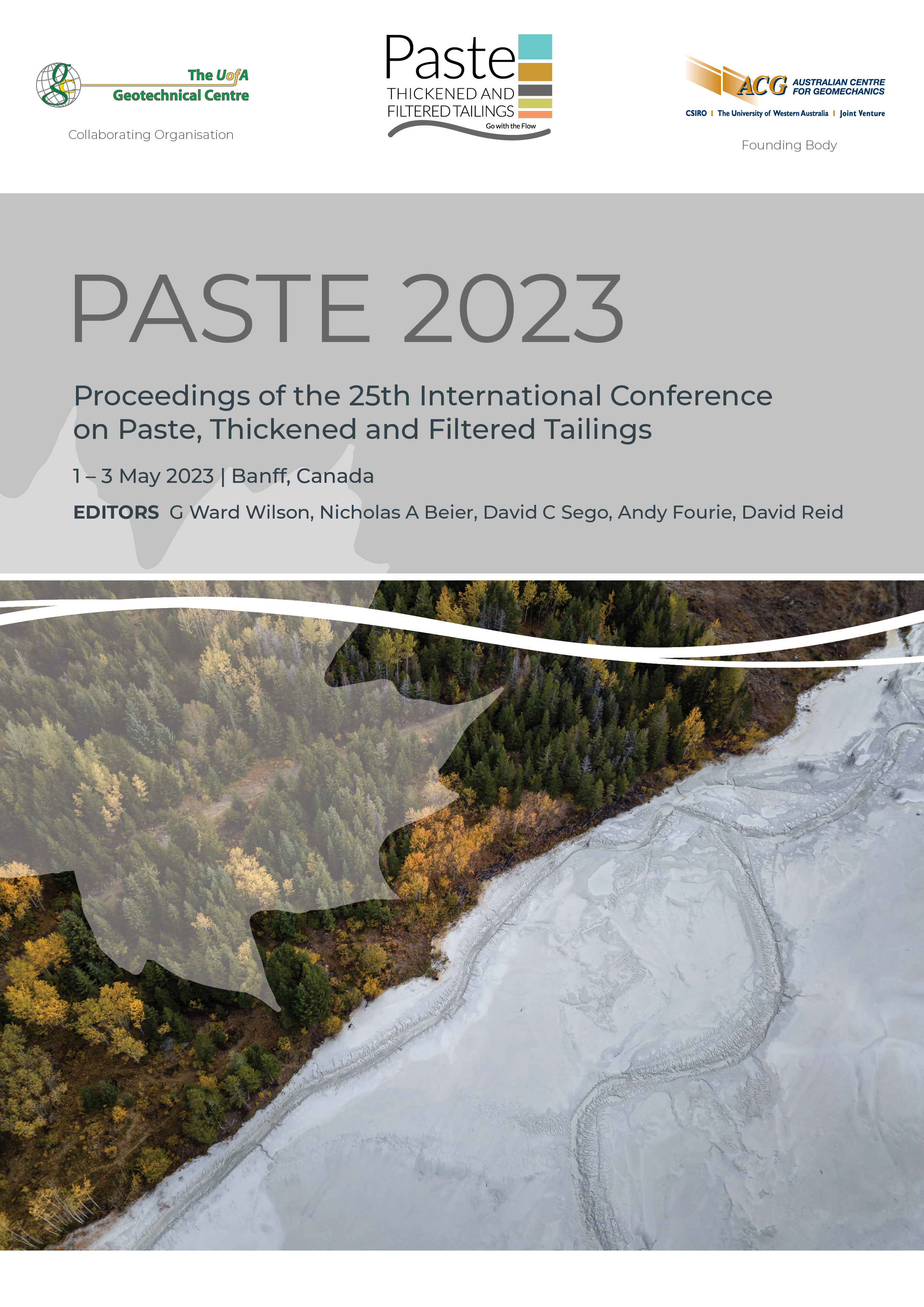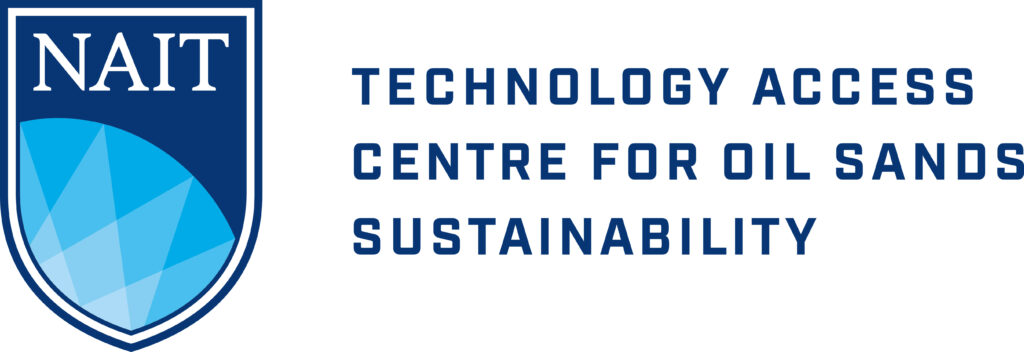Assessing tailings consolidation and changes in supernatant pond area using InSAR and the normalised difference moisture index

|
Authors: Koleshwar, A; Tortini, R; Falorni, G |
DOI https://doi.org/10.36487/ACG_repo/2355_60
Cite As:
Koleshwar, A, Tortini, R & Falorni, G 2023, 'Assessing tailings consolidation and changes in supernatant pond area using InSAR and the normalised difference moisture index', in GW Wilson, NA Beier, DC Sego, AB Fourie & D Reid (eds), Paste 2023: Proceedings of the 25th International Conference on Paste, Thickened and Filtered Tailings, Australian Centre for Geomechanics, Perth, pp. 765-775, https://doi.org/10.36487/ACG_repo/2355_60
Abstract:
Monitoring of tailings storage facilities (TSF) is a critical component of sustainable mining practices. The primary goal of monitoring programmes is to ascertain the correct performance of the tailings facility, thus preventing impoundment failures that may lead to fatalities, severe environmental consequences, and substantial financial losses. Field geotechnical investigations and displacement analysis at tailings impoundments are usually spatially limited as their implementation over a large spatial extent would be cost-prohibitive. Interferometric Synthetic Aperture Radar (InSAR) is a widely used remote sensing monitoring tool that provides a synoptic view of displacement by utilising a high density, high frequency and high-precision network of measurement points. Tailings undergo consolidation settlement as they desaturate over time. Although the movement is mainly vertical, the detection of lateral movement towards the east or west may indicate preferential desaturation pathways. The following study describes the use of an advanced multi-temporal InSAR algorithm to process both commercial high-resolution TerraSAR-X and publicly available lower-resolution Sentinel-1 satellite radar imagery to monitor tailings consolidation. To characterise saturation changes over the same period, optical images from the Sentinel-2 satellite are employed. The specific goals of the study are to: (i) monitor motion within TSFs, focusing on changes in rates of consolidation and any lateral movement over time, (ii) identify areas of higher magnitudes of settlement along with any lateral (east–west) movement, suggesting preferential desaturation pathways, and (iii) correlate changes in consolidation behaviour with the changes of the supernatant pond area. The conclusion of the study suggests that the combined use of both technologies over tailings facilities provides valuable insight into governing dynamics of tailings. The results indicate a probable correlation between the consolidation rates with the supernatant pond area changes. This information can be implemented with the operational plans for a better characterisation of the dynamics within TSF’s.
Keywords: InSAR, remote sensing, monitoring technology, tailings consolidation
References:
Aslan, G, Foumelis, M, Raucoules, D, De Michele, M, Bernardie, S & Cakir, Z 2020, ‘Landslide mapping and monitoring using persistent scatterer interferometry (PSI) technique in the French alps’, Remote Sens, vol. 12, p. 1305, rs12081305.
Caldwell, J & Charlebois, L 2010, ‘Chapter 3: Geotechnical Considerations – Tailings impoundment failures, black swans, incident avoidance and checklists’, in Tailings and Mine Waste 2010, the Organizing Committee of the 14th International Conference on Tailings and Mine Waste, A.A. Balkema, Rotterdam, pp. 33–39.
ESA (European Space Agency) 2015, Sentinel User Handbook and Exploitation Tools (SUHET): Sentinel-2 User Handbook, European Commission, ESA Standard Document 24/07/2015, iss. 1, rev. 2.
Ferretti, A 2014, Satellite InSAR Data: Reservoir Monitoring from Space, EAGE.
Ferretti, A, Prati, C & Rocca, F 2000, Nonlinear subsidence rate estimation using permanent scatterers in differential SAR interferometry, IEEE Trans. Geosci. Remote Sens, vol. 38, no. 5, pp. 2202–2212.
Gao, BC 1996, ‘NDWI – A normalized difference water index for remote sensing of vegetation liquid water from space’, Remote Sensing of Environment, vol. 58, no. 3, pp. 257–266.
Hudson-Edwards, K 2016, ‘Global collaboration is needed to mitigate the environmental impacts of mine wastes’, Science, vol. 352, no. 6283, pp. 288–290.
Hu, X, Oommen, T, Lu, Z, Wang, T & Kim, JW 2017, Consolidation settlement of Salt Lake County tailings impoundment revealed by time-series InSAR observations from multiple radar satellites, Journal of Remote Sensing of Environment, vol. 202, pp. 199–209, .
McJannet, D, Carlin, G, Ticehurst, C, Greve, A & Sardella, C 2022, ‘Determination of Evaporation from a Tailings Storage Facility Using Field Measurements and Satellite Observations’, Mine Water Environ, vol. 41, pp. 176–193, –021–00832–9.
Morrison, K 2022, Tailings Management Handbook: A Life-Cycle Approach.
Necsoiu, M & Walter, GR 2015, ‘Detection of uranium mill tailings settlement using satellite-based radar interferometry’, Eng Geol, vol. 197, pp. 267–277.
O’Donovan, C, Adam, E & Torres-Cruz, LA 2022, ‘Remote sensing of the decant pond of tailings dams: Insights from a South African case study’, The Journal of the Southern African Institute of Mining and Metallurgy, vol. 122, no. 4, pp. 167–172, –9717/1766/2022.
Terzaghi, K, Peck, R & Mesri, G 1996, Soil Mechanics in Engineering Practice, 3rd ed, Wiley, Hoboken.
US EPA (United States Environmental Protection Agency) 1994, Technical Report: Design and Evaluation of Tailing Dams, EPA Report, EPA 530-R-94–038, 59 p.
© Copyright 2025, Australian Centre for Geomechanics (ACG), The University of Western Australia. All rights reserved.
View copyright/legal information
Please direct any queries or error reports to repository-acg@uwa.edu.au
View copyright/legal information
Please direct any queries or error reports to repository-acg@uwa.edu.au



